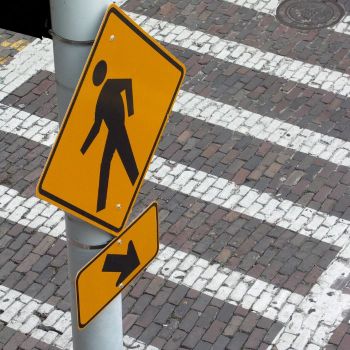4T-Signalization Design
This course provides a history and requirements for use in the design of signalized intersections. The Manual on Uniform Traffic Control Devices (MUTCD) for signal warrants, definitions of traffic signal control types, phasing and signal operating plans are covered. In addition, traffic signal pole layout, vehicle and pedestrian detention, signal timing parameters and signal coordination are be discussed.
Description
This course provides a history and requirements for use in the design of signalized intersections. The Manual on Uniform Traffic Control Devices (MUTCD) for signal warrants, definitions of traffic signal control types, phasing and signal operating plans are covered. In addition, traffic signal pole layout, vehicle and pedestrian detention, signal timing parameters and signal coordination are be discussed.
Course Outline
This course provides background regarding the use of signalization for traffic control. A brief history of the use of signals is provided. The advantages and disadvantages of using signalization as a means of traffic control are also included.
The Manual on Uniform Traffic Control Devices (MUTCD) traffic signal warrants are listed to show that there is a system in place to determine if the installation of a signal is appropriate. Definitions of traffic signal control types are provided including pre-timed, semi-actuated and actuated. Examples of the various signal head types (vehicle displays, signal head auxiliaries and pedestrian displays) are also included with photographs.
There is a discussion of the different types of traffic signal phasing used to control the movements at an intersection. The signal operating plan (SOP) is also discussed in conjunction with these phases. The advantages of traffic signal pole layout (pedestal, span wire assembly and mast arm assembly) are outlined in a table.
Type of vehicle and pedestrian detection are discussed. The controller is also discussed as it is the “brain” of the intersection.
The basic signal timing parameters are defined. Equations are also provided to calculate the pedestrian and vehicle timings. Signal operating terms are also defined. Signal coordination and emergency vehicle preemption are discussed as they affect the traffic signal operation.
| Learning Objectives | Objectives
|
|---|---|
| Contact Hours | 4 Horas |
| CIAPR courses | CURSO TECHNICO |
| Instructor | Debra Kennaugh, P.E. |
| Devices | Desktop, Tablet, Mobile |
| Language | English |
SLSTECH System Requirements
To run our system effectively you should, as a minimum, use the system components listed on this page. If you do not, the system may still work but some functionality may be lost. Workplace IT environments' internal configurations can also restrict the functionality of our system. Access to content may be affected, as may the possibility of uploading files. File size limitations may also apply. Workplaces may also have older versions of software, and our system may not perform well with these.
Operating system
-
Recommended: Windows 7, 10, Mac OSX Sierra, iPad IOS10
Internet speed
-
Use a broadband connection (256 Kbit/sec or faster—this will ensure that you can view videos and online presentations) through USB wireless modem, ADSL, T1/T2, fibre optic or cable.
-
Dial-up access will be significantly slower, and we do not recommend it for using our system.
Internet browsers
Compatible browsers include:
-
Google Chrome 32 bit version 50 or later (recommended for optimal compatibility, this has been thoroughly tested on Windows)
Safari 10 or later (recommended for optimal compatibility, this has been thoroughly tested on Mac)
Note that add-ons and toolbars can affect any browser's performance.
-
MS Internet Explorer is not recommended
Settings
We recommend that the following be enabled:
-
Cookies
-
Pop-ups (in both Internet browser and security software)
-
Javascript
-
We recommend that you use the latest version of Adobe Flash Player.
Software
-
We recommend that you use the latest version of Adobe Acrobat Reader.
-
To view all the resources uploaded to Hazmat Authority, you will probably need to have Microsoft Office (Word, Excel, PowerPoint) or an equivalent (e.g. Open Office, Viewer) installed.
Security
With all firewalls, ensure that you enable uploading of files.


















Validate your login
Sign In
Create New Account